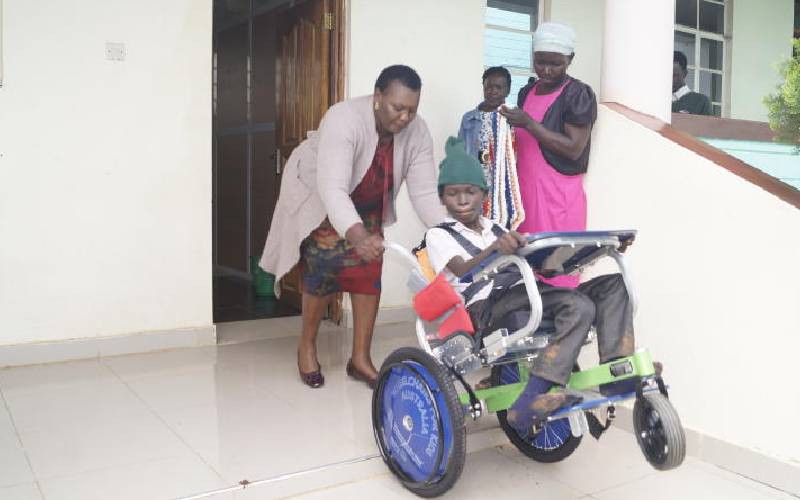Inside Kenya's KSh 3.9 Trillion Budget: Who Gains and How in the 2025/26 Financial Plan
Didacus Malowa, a journalist at TUKO.co.ke, brings over three years of experience covering politics and current affairs in Kenya.
- Treasury Cabinet Secretary John Mbadi has hailed the 2025/26 national budget, currently awaiting presidential assent, as one of the most inclusive financial plans in Kenya’s history.

Source: Twitter
For the first time, the Finance Bill saw wide-scale public engagement, prompting notable amendments based on citizen feedback.
According to Mbadi, the high level of participation, ranging from small business owners and informal traders to youth groups and individual citizens, signalled a shift in how fiscal policy is shaped.
"This is not just a budget crafted in boardrooms. It reflects the voice and will of ordinary Kenyans. We listened, we adjusted, and we acted," said Mbadi.
Several controversial proposals were either revised or dropped entirely following this public pressure.
These included the scrapping of clauses that would have granted the Kenya Revenue Authority access to personal data, and the revision of new tax measures deemed burdensome by many.
At the heart of the budget is a renewed focus on development, with significant allocations made to infrastructure, education, healthcare, housing, and digital transformation—sectors seen as critical for job creation and inclusive growth.
Infrastructure and transport received KSh 318 billion, targeting road construction, rural electrification, and digital connectivity.
Mbadi said these investments will “unlock economic corridors, reduce transport costs for traders, and create new jobs in construction and logistics.”
Education emerged as the top priority, with a record allocation of KSh 701.1 billion.
The funds will support free basic education, school feeding programmes, teacher recruitment, exam subsidies, and expansion of technical training institutions.
The aim is to build a skilled, employable workforce while easing the financial burden on households.
Healthcare was allocated KSh 138.1 billion to accelerate the transition to Universal Health Coverage.
The money will support preventive care initiatives, the shift from NHIF to the new Social Health Insurance Fund (SHIF), and strengthen county health systems. Investments will also go toward recruiting medical staff and procuring essential supplies.
“We want to move away from reactive care and toward prevention—so that no Kenyan has to choose between health and financial ruin,” said Mbadi.
Housing and urban development will get KSh 120.2 billion, continuing the push for affordable housing, slum upgrading, and improved urban infrastructure.
The programme is also expected to drive employment in construction and related sectors.
The security sector has been allocated KSh 464.9 billion, covering the police, military, and intelligence services.
The funds are intended for modernisation, staff welfare, and equipment, amid ongoing regional and global security concerns.
In agriculture, KSh 54.6 billion has been set aside for fertiliser subsidies, irrigation, value addition, and support for livestock and fisheries.
The goal is to boost food production, improve rural livelihoods, and reduce Kenya’s vulnerability to food crises.
Social protection programmes will receive KSh 41.3 billion, aimed at cushioning vulnerable groups through cash transfers to the elderly, persons with disabilities, orphans, and support for youth and women’s enterprise funds.
Mbadi emphasised this as part of the government’s broader equity agenda.
The digital economy also features prominently, with an allocation of KSh 141 billion to support internet expansion, e-government services, and investments in Konza Technopolis.
The funds are meant to support digital inclusion and create opportunities in ICT and online jobs.

Source: Facebook
Small businesses and the manufacturing sector will benefit from a Sh 18 billion allocation, channelled into agro-industrial parks, the Hustler Fund, and SME development.
This is intended to promote local production and reduce dependency on imports.
County governments are set to receive KSh 415.3 billion, reinforcing the government’s commitment to devolved service delivery.
These funds will enable counties to undertake local projects in health, agriculture, roads, and water.
Finally, KSh 21.7 billion was set aside to prepare Kenya to host the 2027 Africa Cup of Nations (AFCON), including renovations of Kasarani, Nyayo, and Kipchoge Keino stadiums, and the development of new sporting infrastructure.
This is expected to create jobs, boost tourism, and lay the foundation for a stronger sports sector.
Overall, the 2025/26 budget reflects a pivot toward inclusive growth, youth empowerment, and long-term investment in human capital.
Mbadi framed the budget as a turning point in Kenya’s economic planning.
“This is not just a financial statement, it’s a reflection of the people’s voice and a blueprint for a fairer, more prosperous nation.”
In a related report, Kenya’s 2025/26 budget is set at KSh 4.26 trillion, roughly KSh 2.8 trillion more than Uganda’s KSh 1.44 trillion (USh 40.7 trillion) for the same period.
Kenya expects around KSh 3.39 trillion in revenue, with KSh 3.1 trillion for recurrent spending, KSh 725 billion for development, and KSh 436 billion allocated to counties.
Uganda, by comparison, dedicated KSh 202.3 billion to infrastructure and 132.41 billion to defence.
Economists warn Kenya’s grand spending plans may fall short if tax targets aren’t met, predicting an overambitious fiscal setup.
Source: TUKO.co.ke







